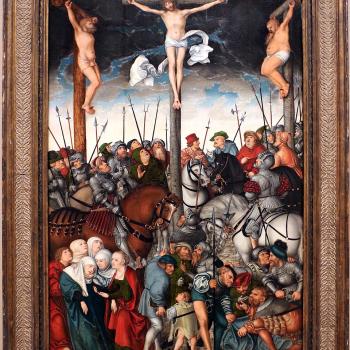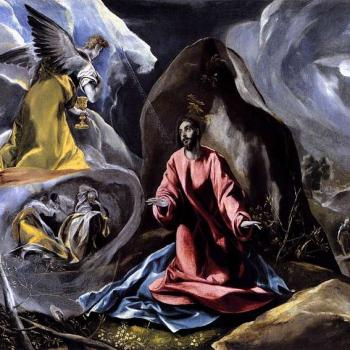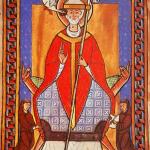[It’s still Christmas. . . .]
Ray Hartwig, who holds the office of the Secretary of the Lutheran Church Missouri Synod, draws attention to a Christmas account in the Bible that gets hardly any notice. It’s in the Book of Revelation:
And a great sign appeared in heaven: a woman clothed with the sun, with the moon under her feet, and on her head a crown of twelve stars. She was pregnant and was crying out in birth pains and the agony of giving birth. And another sign appeared in heaven: behold, a great red dragon, with seven heads and ten horns, and on his heads seven diadems. His tail swept down a third of the stars of heaven and cast them to the earth. And the dragon stood before the woman who was about to give birth, so that when she bore her child he might devour it. She gave birth to a male child, one who is to rule all the nations with a rod of iron, but her child was caught up to God and to his throne, and the woman fled into the wilderness, where she has a place prepared by God, in which she is to be nourished for 1,260 days. (Revelation 12:1-6)
So what do you make of this? The child is pretty obviously Christ. The woman is often interpreted as the Church, but the Church does not bring forth Christ, but the reverse. Besides, the Church is His bride, not His mother. Others say the woman is Israel, which is a possibility. Others say she is the Virgin Mary, which seems most likely. What does this account teach us about the meaning of Christmas?
UPDATE: I had always heard that the veneration of the Virgin Mary was a displacement of pagan goddess worship, with one evidence being that in Roman Catholic iconography, the depictions of Mary as the Queen of Heaven showed her wearing a crown of twelve stars and standing on the moon. Supposedly, this was how Diana the moon goddess was depicted. But this text, with Roman Catholics do ascribe to Mary, shows that the imagery is Biblical.
And yet the text is also problematic to Roman Catholic Mariology. The woman is “crying out in birth pains and the agony of giving birth.” But according to Roman Catholicism, Mary was blessed with an immaculate conception, so that she did not inherit original sin. Thus, she was spared Eve’s curse of enduring pain in bearing children. And, indeed, this is how Roman Catholic accounts depict the birth of Christ.
I suppose the best interpretation is that the woman represents “God’s people”–both in the sense of Israel and the Church as the new Israel–which is what the Lutheran Study Bible says, but that, as Al Colver adds in Carl’s link, both are represented in the historical Virgin Mary (who does bear the curse of the Fall, so that Christ can fully bear humanity’s Original Sin so as to atone for it).
If I don’t have the Roman Catholic position right, I’m open to correction.
















